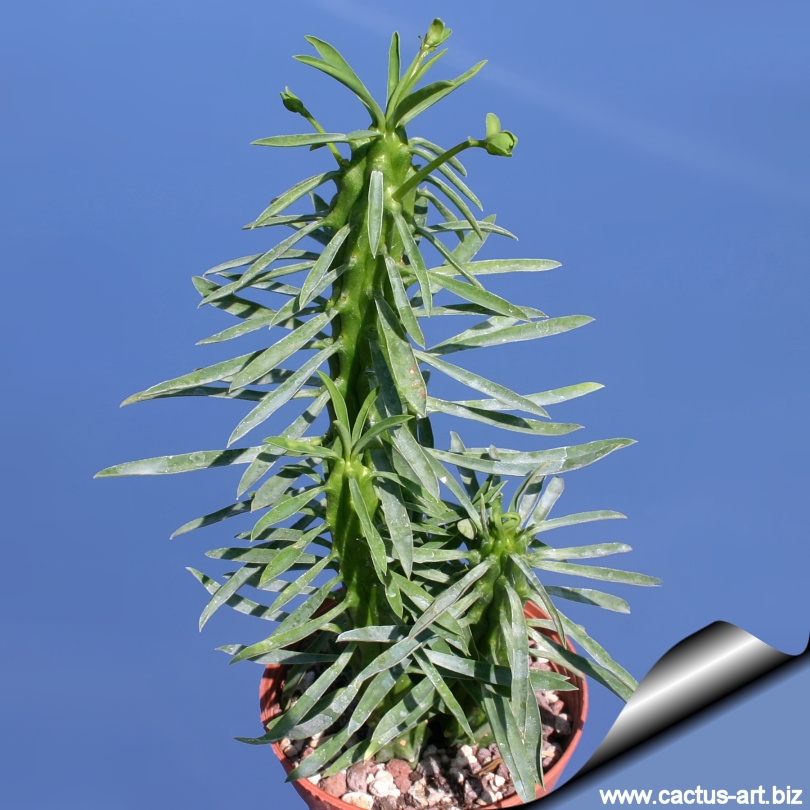|
|
|

Euphorbia
clava
Forms erect club-shaped leafed stems with hexagonal tubercles in
rows.
|
 |
 |
|
|
|
|
Family: Euphorbiaceae
Accepted
scientific name: Euphorbia clava
Jacq.
Published In: Icones Plantarum Rariorum 1: 9. 1784.
(Icon. Pl. Rar.)
Common English Names include:
Club Spurge
Origin: East Cape endemic (from Humansdorp to King William's
Town), South Africa
Conservation status: Listed in
CITES appendix 2.
Etymology: Named for Euphorbus, Greek physician to
Juba II, King of Mauretania.
The species name comes from the Latin 'clava', = 'club'
and refers to the club-shaped branches.
|
|
Description: Succulent
shrublet 60 to 1.5 m tall producing a dense cluster. Characteristically
club-shaped when young.
Stem: Cylindrical, deep green, erect, simple and ribbed, with
hexagonal tubercles to 6 mm long and 1-1.5 cm wide at base. Branchlets
club-shaped.
Spines: Spineless.
Leaves: Bright green to glaucous green, linear, with the edges
parallel and long lasting.
Flowers: Very pretty, and ample, long peduncled, cyathia with
light-green to purplish bracts.
Blooming season: Late winter to spring.
Fruits: Once the pod dries, it will dehisce and catapult it's
seeds a surprising distance.
|
|
|
|
Cultivation: It is an easy
species to grow that is suited for any well drained soil in full sun.
But young plant are happy growing indoors, where they can easily reach
the ceiling. Give the plant an airy growing medium which mainly consists
of non organic material such us clay, pumice, lava grit, and only a
little peat or leaf-mould. Water regularly during the active growing
season from March to September. No water should ever be allowed to stand
around the roots. Keep almost completely dry in winter. It is a
moderately fast grower, and will quickly become large landscape
masterpieces in just 3-5 years. Only downside is from strong winds, the
columns often smash into each other, causing permanent scarring... best
to plant in such a location where winds are not a big issue. If plant
becomes very red, this is a sign that the roots have not developed
properly. It is a relatively fast growing and long lived plant and once
established, it will be content in its position and with its soil for
years. It can tolerate moderate shade, and a plant that has been growing
in shade should be slowly hardened off before placing it in full sun as
the plant will be severely scorched if moved too suddenly from shade
into sun. Like quite small pots, repott in very later winter, early
spring. Can be pruned for shape and branching. Frost tender, frost free
zones only. Plant Pests: Prone to mealy bugs and rarely scale.
Propagation: It is
easy to propagate by cuttings in late spring to summer, just take
a cutting of the plant let it dry for 1 or 2 weeks and stuff it in the
ground (preferably dry, loose, extremely well draining soil).
Warning: All Euphorbias contain a white sap that can be
irritating to eyes and mucous membranes. If contact is made with this
white sap, take care to not touch face or eyes before washing hands with
soap and water.

 |
|